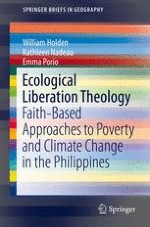Climate change-related effects and aftermaths of natural disasters, such as Typhoon Haiyan in the Philippines, have wreaked havoc on local peoples’ lives and livelihoods, especially in impoverished coastal communities. This book looks at local-level responses to the effects of climate change from the perspective of ecological theology and feminism, which provides a solution-based and gender-equitable approach to some of the problems of climate change. It examines how local social and religious action workers are partnering with local communities to transform and reconstruct their lives and livelihoods in the 21st century.
